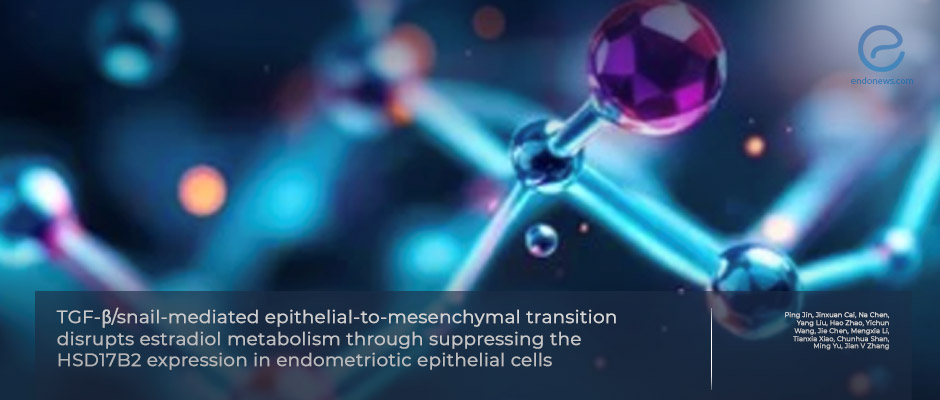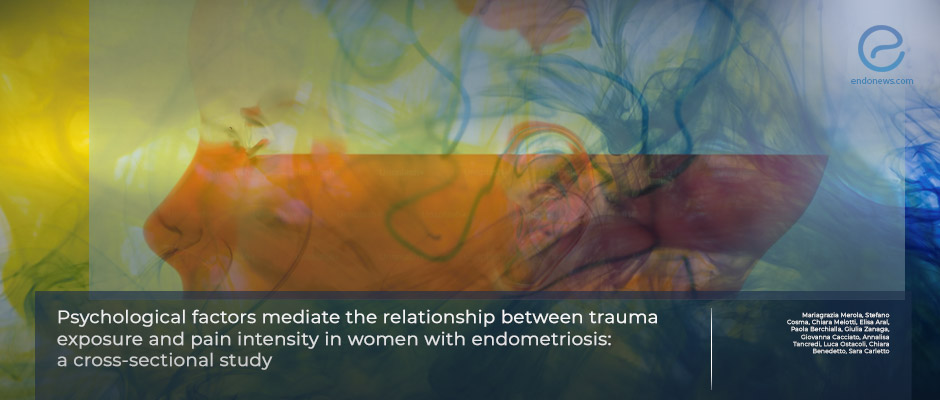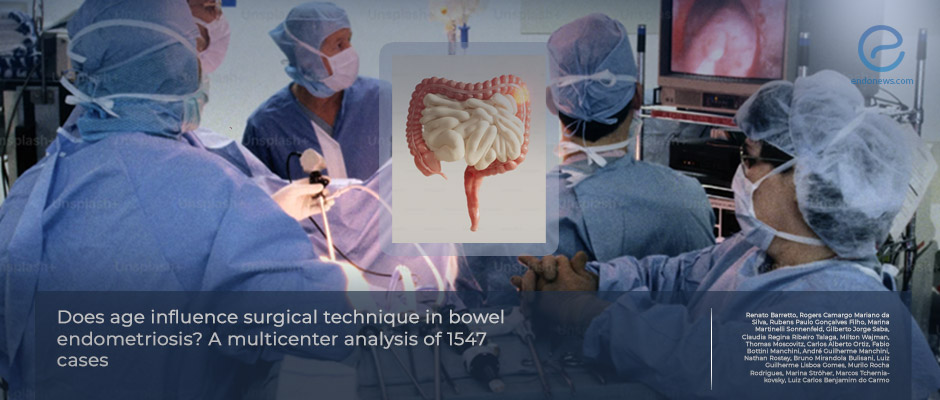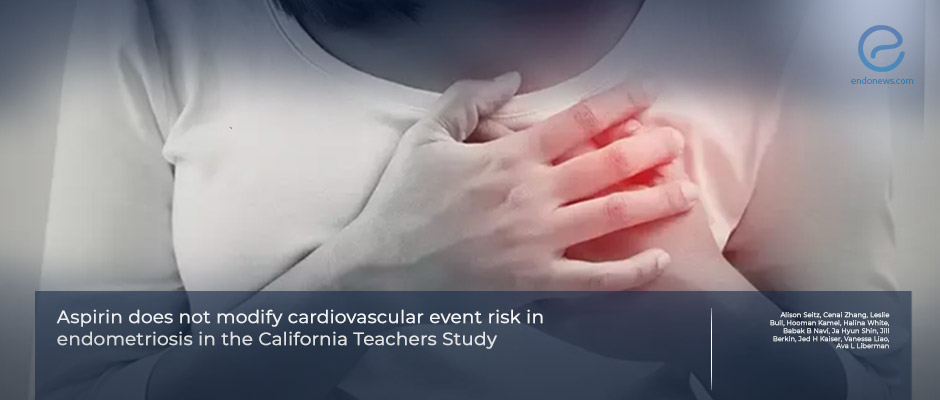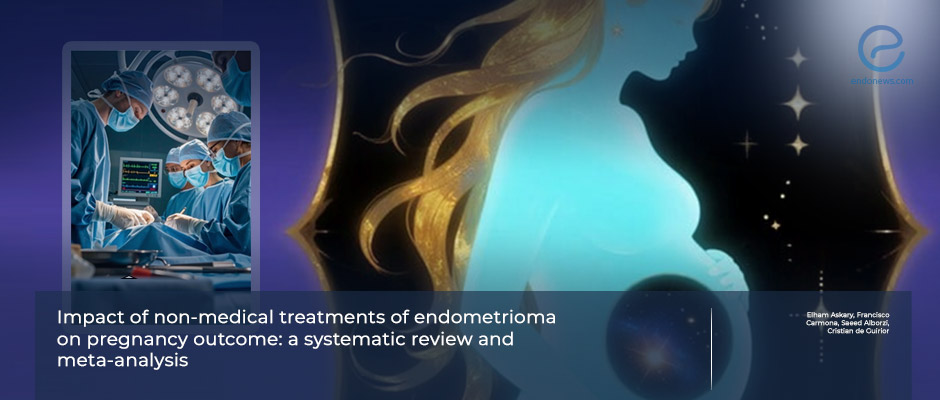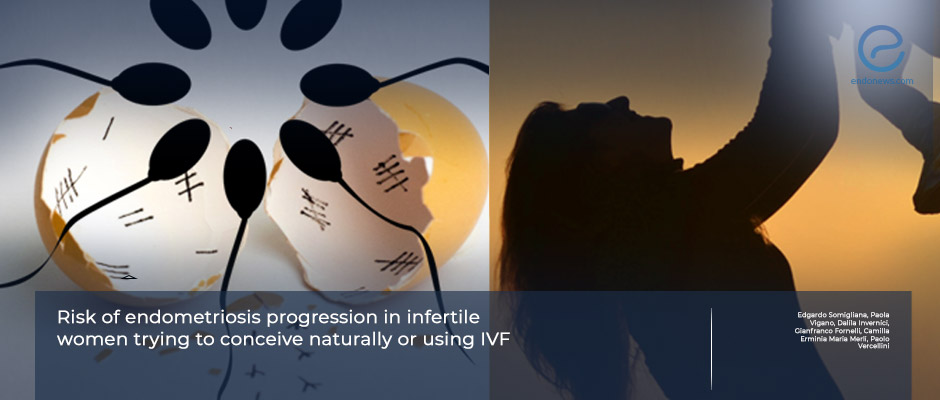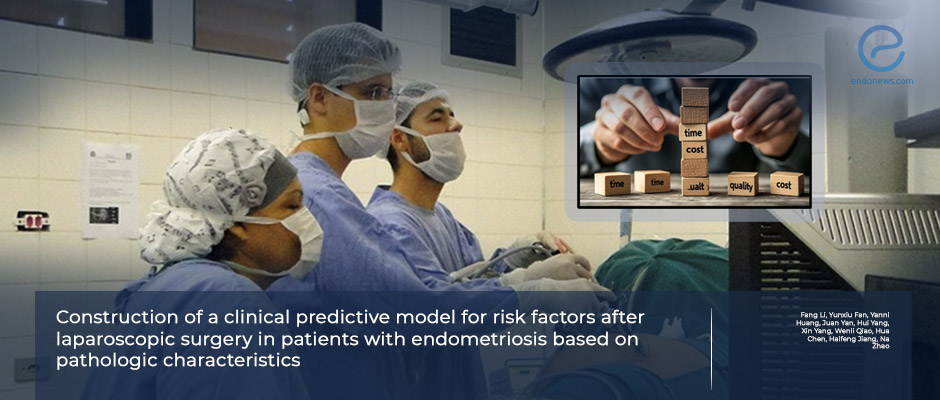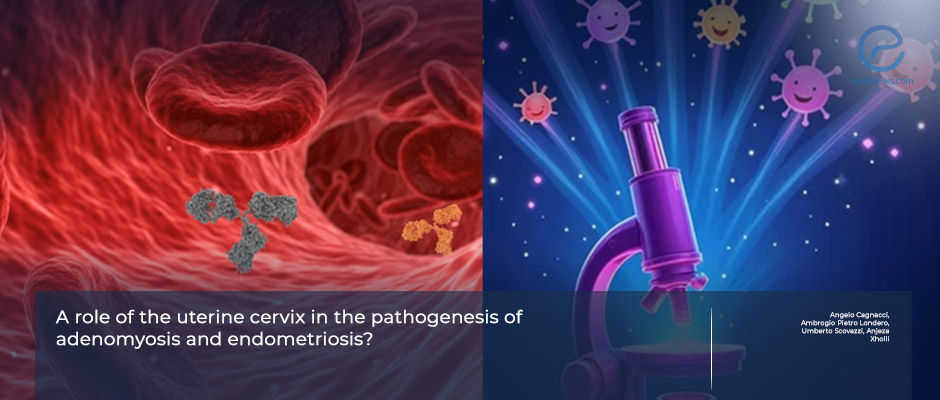 Selma Oransay, MD
Selma Oransay, MD
Dr. ORANSAY is 35 years experienced clinician in OB/ GYN. She worked in the main national maternity educational hospital of Turkey for 20 years than she moved to İstanbul and worked in private hospitals. Her published articles are mostly on topics of menopause and infertility. She is also experienced as a voluntary OB/GYN doctor in African healthcare program.
How Epithelial-to-Mesenchymal Transition Alters Estradiol Metabolism in Endometriotic Cells?
Researchers are increasingly uncovering how endometriosis behaves not just as a hormonal disorder but as a condition shaped by complex cellular signaling pathways. A new study published in Biochemical and Biophysical Research Communications helps explain why endometriotic lesions are able to maintain high levels of estrogen, which fuels their growth and survival. The study focuses on a cellular process called epithelial–mesenchymal transition (EMT). In EMT, cells that normally behave like tightly connected “epithelial” cells begin to act more like flexible,…
Key Points Lay SummaryTrauma, Mood, and Pain: A Mediated Relationship in Endometriosis
Women living with endometriosis often experience chronic pelvic pain, but the reasons why some women report more severe pain than others are not fully understood. Trauma has been linked to altered pain perception in other chronic pain conditions, yet its specific role in endometriosis has rarely been examined. In a study conducted at an endometriosis referral center named Città della Salute e della Scienza di Torino University Hospital at Turin, Italy, researchers surveyed 120 women about their trauma history, emotional…
Key Points Lay SummaryEndometriosis in Primary Care: Barriers and Realities
Recognizing and managing endometriosis in primary care is often challenging, especially in healthcare systems with limited specialist access. In the Faroe Islands, general practitioners (GPs) are the first point of contact for women presenting with pelvic pain, heavy periods, and other symptoms that may indicate endometriosis. However, the diagnostic process is not straightforward, and many women experience long delays before receiving a clear explanation for their symptoms. In this qualitative interview study published in BJGP Open, a group of researchers…
Key Points Lay SummaryDoes Age Matter in Choosing Bowel Endometriosis Technique?
Bowel endometriosis often requires complex minimally invasive surgery, and surgeons commonly choose between shaving, discoid resection, or segmental bowel resection based on how deeply the disease infiltrates the rectum or sigmoid. It has long been assumed that younger women might be offered more conservative procedures, while older women might undergo more extensive surgery. However, this assumption had never been tested in a large, real-world population. In this multicenter study published in the Journal of Robotic Surgery, Renato Barretto and colleagues…
Key Points Lay SummaryEndometriosis Care Quality Reform in the United States
Endometriosis care in the United States varies widely depending on where and how patients receive treatment, according to a new analysis published in Journal of Minimally Invasive Gynecology. A national multidisciplinary committee—the Endometriosis Care Quality Collaborative (ECQC)—brought together gynecologic surgeons, pain specialists, primary-care physicians, physical therapists, mental-health experts, and patients to identify which measures best reflect quality care for people living with endometriosis. Using a structured decision-making process, the committee evaluated more than 200 potential quality indicators across diagnosis, treatment,…
Key Points Lay SummaryESUR Experts Redefine MRI Standards in Endometriosis
Magnetic resonance imaging (MRI) has become a cornerstone in diagnosing and mapping endometriosis, especially when ultrasound results are inconclusive. The European Society of Urogenital Radiology (ESUR) has now published an updated 2025 consensus that redefines how MRI should be performed, interpreted, and reported in women with suspected or confirmed endometriosis. This multidisciplinary document, developed by 21 experts from 10 countries, chaired by Dr.Thomassin-Naggara and Dr.Lucia Manganaro, provides detailed recommendations on patient preparation, MRI protocols, and structured reporting templates. It highlights…
Key Points Lay SummaryAspirin Fails to Alter Cardiovascular Risk in Endometriosis
Aspirin, often recommended for heart protection, may not help women with endometriosis avoid cardiovascular disease. In a 25-year study of more than 120,000 women from the California Teachers Study, researchers from Weill Cornell Medicine in New York, and the University of Washington in Seatle found that women with endometriosis were more likely to experience heart attacks, strokes, or other major cardiovascular events, particularly before age 40. However, regular aspirin use did not reduce these risks. Even among long-term users, the chance…
Key Points Lay SummaryMast Cell–Mediated Epithelial–Mesenchymal Transition in Endometriosis
A new study led by Dr.Zhang in Reproductive BioMedicine Online reports that mast cells—immune cells best known for triggering allergy symptoms—may also drive the progression of endometriosis by pushing uterine cells into a more invasive state called epithelial–mesenchymal transition (EMT). EMT is a cellular program in which orderly, “brick-like” epithelial cells loosen their bonds, become more spindle-shaped, and move more easily—traits that can help endometrial cells implant and spread outside the uterus. The researchers combined three lines of evidence. First,…
Key Points Lay SummarySingle Name: Endometriosis — A Unifying Vision for the Disease
In his editorial “Endometriosis: one name, many presentations,” recently published in Fertility and Sterility Reports, Dr. Ceana Nezhat calls for a unifying framework that recognizes endometriosis as one systemic disease with multiple manifestations, rather than a set of unrelated conditions defined by anatomical site. Drawing on decades of pioneering surgical and academic work, Dr. Nezhat argues that distinctions such as “pelvic,” “thoracic,” “urinary,” or “bowel” endometriosis obscure the disease’s shared biological and pathological mechanisms. Regardless of location, the lesions exhibit similar…
Key Points Lay SummaryBody in Battle: Black Women’s Endometriosis Experience
Black women with endometriosis often face more than physical pain — they encounter years of disbelief, dismissal, and delay before receiving a diagnosis. A new qualitative study published in BMC Women’s Health and led by Dr. Gbemisola D. Rowland explores this reality through the words and lived experiences of Black women in the United States. The researchers interviewed participants about their journeys with endometriosis, focusing on how the disease affects their daily functioning, emotional well-being, and trust in the healthcare…
Key Points Lay SummaryComparing Non-Medical Endometrioma Treatments: Fertility Impact
Endometriomas affect up to 44% of women with the disease and are closely linked to infertility. Choosing the right treatment is important, because different surgical techniques can impact both the chances of pregnancy and the risk of cysts coming back. In this large study, published in Reproductive BioMedicine Online, researchers from Iran and Spain analyzed data from 24 prospective studies including 2,458 women with infertility and endometriomas. They compared several non-medical treatment options: cystectomy (surgical removal of the cyst wall),…
Key Points Lay SummaryRisk of endometriosis progression in infertile women trying to conceive naturally or using IVF
Many women with endometriosis use long-term hormonal treatments to control symptoms and slow the disease, but these medications must be stopped when trying to get pregnant. This creates a dilemma: stopping treatment may increase the chance of endometriosis coming back or getting worse, but continuing treatment makes conception impossible. This mini review, published in a recent issue of Human Reproduction by Dr. Edgardo Somigliana, Prof. Paolo Vercellini, Dr. Paola Viganò, and colleagues from Milan, Italy, explores the risks of endometriosis recurrence and progression in infertile…
Key Points Lay SummaryEndometriosis and Impaired Neurovascular Control
Endometriosis is usually considered a pelvic disease, but its impact may extend well beyond the reproductive system. Many women with the condition report fatigue, dizziness, or circulatory instability that cannot be explained solely by lesions or pain. One possible explanation is dysfunction of the autonomic nervous system, which controls blood pressure and heart rate reflexes. Auni C. Williams and colleagues at Pennsylvania State University, USA, explored this hypothesis in the first study of its kind, published in journal named Hypertension of American…
Key Points Lay SummarySupervised Exercise for Refractory Endometriosis
Fatigue is one of the most disabling yet under-recognized symptoms of endometriosis. Even when standard treatments such as surgery or hormonal therapy are applied, many women continue to struggle with exhaustion, low fitness, and psychological distress. Could structured exercise offer a non-pharmacological way forward? A team led by Dr. Mónica Rodríguez-Rodríguez from the University of Córdoba, Spain, addressed this question in a randomized controlled trial published in the European Journal of Obstetrics & Gynecology and Reproductive Biology. The researchers designed a…
Key Points Lay SummaryEndometriosis as a Cardiovascular Risk Factor: A Comprehensive Meta-Analytic Review
Cardiovascular disease is the leading cause of death among women worldwide, accounting for nearly one-third of all deaths. While traditional risk factors include smoking and diabetes, women also face sex-specific contributors such as polycystic ovary syndrome, hypertensive disorders of pregnancy, and premature ovarian insufficiency. Emerging evidence now suggests that endometriosis may be an additional risk factor for cardiovascular disease. Saad and colleagues from Dow University of Karachi, Pakistan, conducted a systematic review and meta-analysis, published in the European Journal of…
Key Points Lay SummaryFrom childhood trauma to adult disease: adversity tied to endometriosis diagnosis
The causes of endometriosis remain incompletely understood, with multiple theories proposed, including retrograde menstruation, immune dysfunction, hormonal and environmental influences. More recently, evidence has suggested that adverse experiences in childhood may contribute to the risk of developing endometriosis later in life. Rostvall and colleagues from Karolinska Institutet, Sweden, investigated this question in a large, nationwide cohort of more than 1.3 million women, born between 1974 and 2001. Using linked national registers, the researchers analyzed the relationship between a wide range…
Key Points Lay SummaryIdentifying recurrence risk before surgery: Pathological insights in endometriosis
Endometriosis is an estrogen-dependent condition that worsens with each menstrual cycle through chronic inflammation and complex environmental interactions. This progression can lead to deep infiltrating lesions, severe pelvic pain, painful intercourse, gastrointestinal symptoms, and infertility. Laparoscopic surgery remains the gold standard for confirming the diagnosis and removing disease tissue while preserving healthy structures to protect fertility. However, even after such conservative surgery, recurrence rates can reach up to 50% within five years—making prevention a key goal to avoid repeat operations…
Key Points Lay SummaryCervix as a Missing Link in Endometriosis Pathogenesis
The cervix, a 4 cm-long, 2.5–3 cm-wide segment at the lower end of the uterus, plays multiple roles in women’s reproductive health. Lined with mucus rich in antimicrobial peptides, immunoglobulins, immune cells, and exfoliated epithelial cells, it acts as both a barrier and a support structure for pregnancy. Estrogen increases the amount of cervical mucus, decreases its viscosity, and widens mucin pores to facilitate sperm passage, while progestins exert the opposite effect, reinforcing the barrier against bacterial ascent. Beyond these…
Key Points Lay SummaryEndometriosis surgery and Anti-Mullerian Hormone Levels
Anti-Müllerian Hormone (AMH), a hormone produced by ovarian granulosa cells, is widely used to estimate ovarian reserve and predict how women may respond to fertility treatments. According to the latest ESHRE (European Society of Human Reproduction and Embryology) guidelines, ovarian reserve should always be assessed in women with endometriosis before planning surgery, as both the disease and its treatment can affect future fertility. A research team led by Horace Roman reviewed 25 years of studies to explore how different types of…
Key Points Lay SummaryComparing Surgical and Non-Surgical Outcomes in Ovarian Endometriosis
Endometriosis often brings chronic pelvic pain, infertility, and diminished quality of life for millions of women. When this condition affects the ovaries—known as ovarian endometriosis or endometriomas—surgical treatment is frequently considered. But how much does surgery actually improve daily life? A recent study from La Paz University Hospital in Spain followed 40 women, including those with operated and non-operated ovarian endometriosis, women with deep endometriosis, and healthy controls. Over a year and a half, researchers assessed their quality of life,…
Key Points Lay Summary